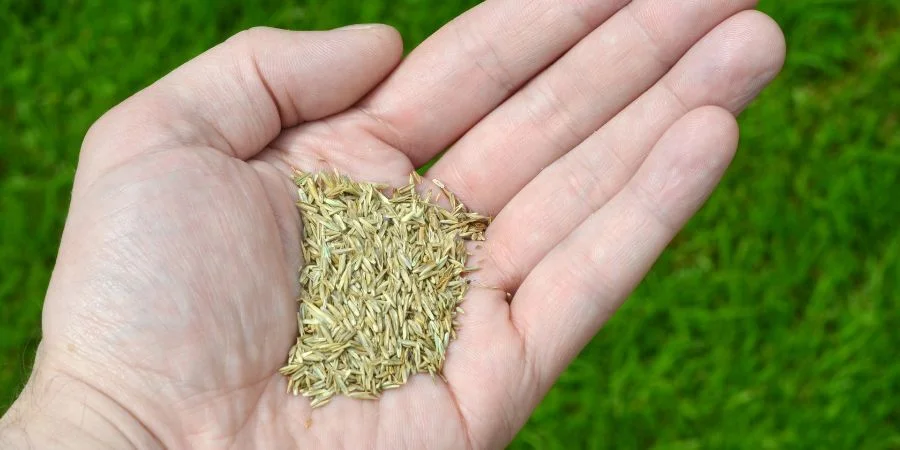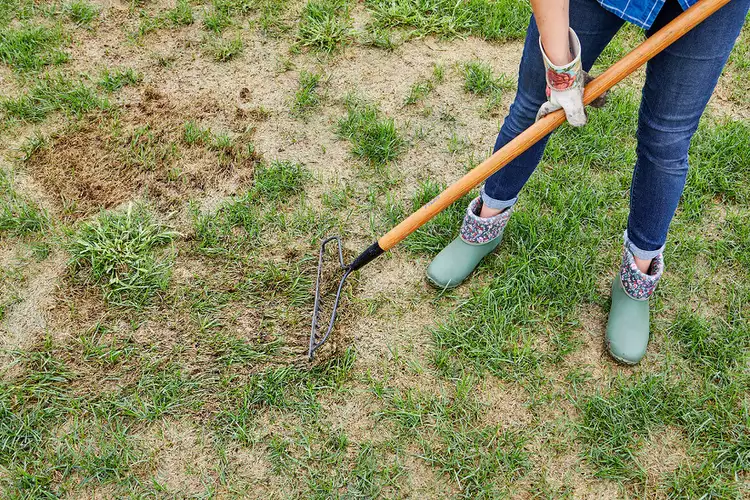When Can Puppies Go Outside In the Yard?
Last Updated on April 5, 2020 by Duncan
When you get a new puppy, you can’t wait to head out for adventurers with your new friend. Unfortunately, they are often not ready for that yet. This is because their immune system isn’t developed enough, so they are prone to social dog diseases.
Introducing young puppies to the new environment might also be overwhelming, not to mention the risk of over-exercising them, which puts them at the risk of developing joint problems.
Due to the risks involved with taking out your dog too early, as a new dog owner, you must be wondering, when can puppies go outside in the yard?
This article is going to answer this question and guide you on how to properly and safely introduce the puppy to the yard.
When can my puppy go outside?
You might be itching to get this answer. The best time to take your puppy outside in the yard for the first time is two weeks after the second set of vaccinations.
Puppies need two sets of injections to be fully protected
They get their first round of vaccines when they are 6-8 weeks. The second round is administered 2-4 weeks after the first. If you live in high-risk areas, vets recommend a third set of vaccination, but most people don’t need this.
So, you are safe to take your puppy outside in the yard when they are 14-18 weeks. At this time, the puppy has lower risks of acquiring canine parvovirus and other dangerous dog diseases.
Keeping your puppy protected until he is ready for the yard
Keeping your puppy out of trouble until he is ready for the yard is vital. Luckily, there are plenty of ways in which you can do this. Some of these ways include:
Get all the recommended vaccines
One of the reasons you shouldn’t take your dog to the yard too early is because he has a lowered immune system that can only be improved by vaccinations.
Vets will recommend different vaccines depending on your dog type, your environment, and other factors.
Here is a list of some of the puppy vaccinations that the vet might recommend.
Don’t put the dog down while at the vet office
While the veterinary staff put a lot of effort into keeping their surfaces clean and disinfected, sick dogs can still contaminate the furniture, rest areas, floors, and other areas of the hospital.
To keep your puppy safe, always carry the puppy with you—don’t place him on any of the surfaces.
Don’t let the dog walk on the sidewalks
It can be tiring to carry a 20-pound puppy, so it’s tempting to put him on a leash and let him walk on the sidewalks as you are going and leaving the vet’s office. Don’t do this.
Remember, thousands of dogs might have walked on the sidewalk, and you can’t know the diseases they are suffering from.
So, always carry your puppy in and out of the veterinary hospital.
Keep the puppy away from other dogs
As mentioned above, the puppy is at high risk of contracting diseases from the other dogs, so you should ensure that he doesn’t interact with the other dogs.
If you have other dogs in your compound, ensure they are vaccinated, so you don’t worry in the event they accidentally come into contact with the new puppy.
It’s also wise to let your neighbors know you have a new dog and ask them whether their dogs are vaccinated. Even if the neighbors tell you their dogs are vaccinated, still keep your precious puppy away from them.
Keep the puppy at home
In as much as you want to spend as much time with the puppy as possible, you shouldn’t take a trip with him, unless you are taking him to the vet.
Instead, lock him in the house. When leaving, ensure there is enough water and food for him to eat.
If possible, always have someone looking over him when you are away.
Why do you need to take your puppy to the backyard?
If this is the first time owning a dog, you must be wondering why you need to take your dog outside. Well, doing so comes with plenty of benefits that include:
Time with your friend
Spending time in the yard with your puppy is a great bonding moment. You can go there and do absolutely nothing or play a dog sport.
Remember to keep a close eye on him so that he doesn’t destroy the flowers or chew on a poisonous plant.
Yard time helps with exercise and weight control
Just like humans, dogs that spend most of their time indoors are bound to put on weight. Obesity is dangerous to puppies as it exposes them to a myriad of health issues.
While at the yard, the dog will run around, which comes in handy at maintaining a healthy body weight that not only keeps the puppy in good condition, but also keeps him off dangerous diseases.
You should note that some dog breeds can spend more time in the yard than others. For example, beagles, border collies, huskies, and sporting dogs need a lot of outdoor time to remain well adjusted.
Yard time exposes the puppy to fresh air
Other than on hot, humid days when smog is a problem, outdoor air quality is better than indoor air.
While the house might be deemed safe, your puppy can be exposed to plenty of toxins such as house cleaners, plastics, carpets, and many others while in the house.
Taking your puppy outside in the yard gives him a break from the toxins.
The puppy gets a valuable supply of vitamin D
Vitamin D is vital for bone health and also comes in handy at maintaining the correct calcium to phosphorus ratio in the body.
While the puppy can get this when lying near a sunny window, the window absorbs some of the sun’s radiation, so the sun getting into the house isn’t too beneficial.
As you are allowing the puppy to take in as much sunlight as possible, you should note that the puppy can suffer from skin cancer, especially if your puppy is light-colored, has a thin coat or pink nose.
Taking your puppy on the yard helps it to connect with the earth
What happens when you let loose a dog in an open yard? It rolls in the grass or digs in the dirt.
One of the theories for doing this is because the puppy is seeking the earth’s magnetism, which is vital for the dog’s health and well being.
When you keep the puppy indoors for a long time, you cut it off from the natural magnetism which the dog is yearning for. A dog that is held indoors for a long time feels rundown, is low on energy, and often stressed out.
The simple act of letting the puppy walk and roll in the yard plays a vital role in rejuvenating him.
Being outdoors reduces boredom, anxiety, and depression
According to Dr. Suzanne Hetts, an animal behaviorist, dogs that spend most of their time indoors are restless, develop aggressive tendencies, and behavioral problems.
When you don’t give your puppy an outlet to release their physical energy, they release the energy by being aggressive, among many other ways.
When you allow the puppy into your yard, you eliminate signs of stress and anxiousness because it’s being exposed to different situations.
Safety tips when you take your puppy to the yard
If your puppy has completed the vaccination and you have time, it’s a no brainer that you should take your puppy to the yard. For a great experience, observe these tips:
Have an ideal yard
An ideal yard should have a six-foot fence and a locked gate. Even when you keep a close eye on the puppy, you might be distracted for a few moments, and since puppies are curious, they will walk or even run away from you.
When you have a fence and a gate, you have peace of mind that the dog won’t leave the area.
Consider the breed of your puppy
Different breeds vary significantly on how long they want to and should stay outside the yard. Some toy breeds are fragile and don’t have a lot of hair; hence can’t spend long periods in the yard.
If you aren’t sure about the ideal time you should spend with your dog in the yard, consult your vet.
Get rid of hazardous materials from the yard
There are plenty of things that can harm your puppy in your yard. These include: chemicals, sharp edges, wasps, stagnant water, uncovered lawn edging, bee stings, fleas, and many others.
The puppy can also chew or ingest things that can get stuck in their intestines.
To avoid this, before you introduce your puppy to the yard, get rid of any materials that can hurt him.
You also should regularly mow the lawn and maintain short grass. This not only makes it easy for the puppy to have a good time on the lawn, but it also prevents the puppy from being infected by fleas.
If you have a pool, pond, or any other large water body on your yard, fence around the perimeter to prevent the puppy from drowning.
Don’t let the dog run free
The first rule of having your puppy in a yard is never to let him run free. If possible, have him contained in an exercise pen or a fort Knox-type fenced-in yard.
You can also have the puppy on a tether, but ensure that the lead isn’t too long as he can wind himself around a tree or any other obstacle leading to chocking or even injury.
Have an adequate supply of fresh, clean water
The chances are that you will be out in the yard during the sunny days. As the dog runs around, he is bound to get thirsty.
To keep the puppy comfortable, have enough clean water with you. It also doesn’t hurt to have a few dog toys for the puppy to play with.
Ensure the weather is right
You want your precious little friend to enjoy himself, so you should go out when the weather is nice enough for the puppy to fully enjoy himself.
If it’s too cold, raining, or extremely hot and humid, the puppy will be uncomfortable, so you should avoid going out in your backyard at this time.
Keep a close eye on the puppy
Even if you have a secure and locked fence, you shouldn’t leave your dog outside when you are away. Let someone take him out when you aren’t around.
If the puppy is big enough, give him the option to get in and out of the house via a doggy door. This comes in handy when the weather changes for the worse.
In conclusion
A new puppy is an excellent addition to the family, and taking him to the yard is vital for his development. While this is the case, to avoid endangering your puppy’s life, do it at the right time.
Wait until he has completed his vaccination. If he is small and the legs are still weak, wait until they are strong enough to carry him around comfortably.
When you do this, you will not only enjoy spending time with your puppy; you also will be raising a puppy that is fully developed in all areas.


